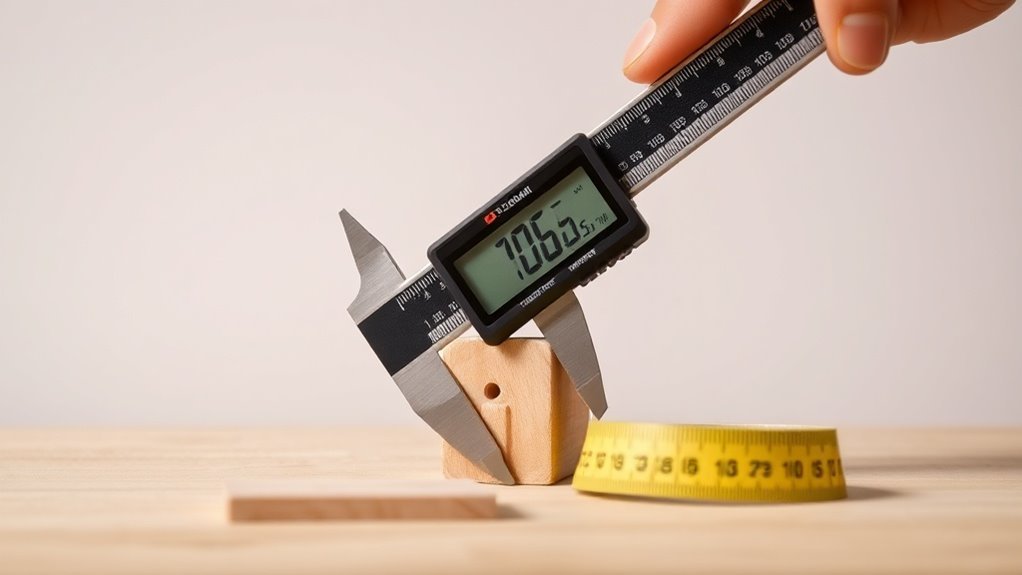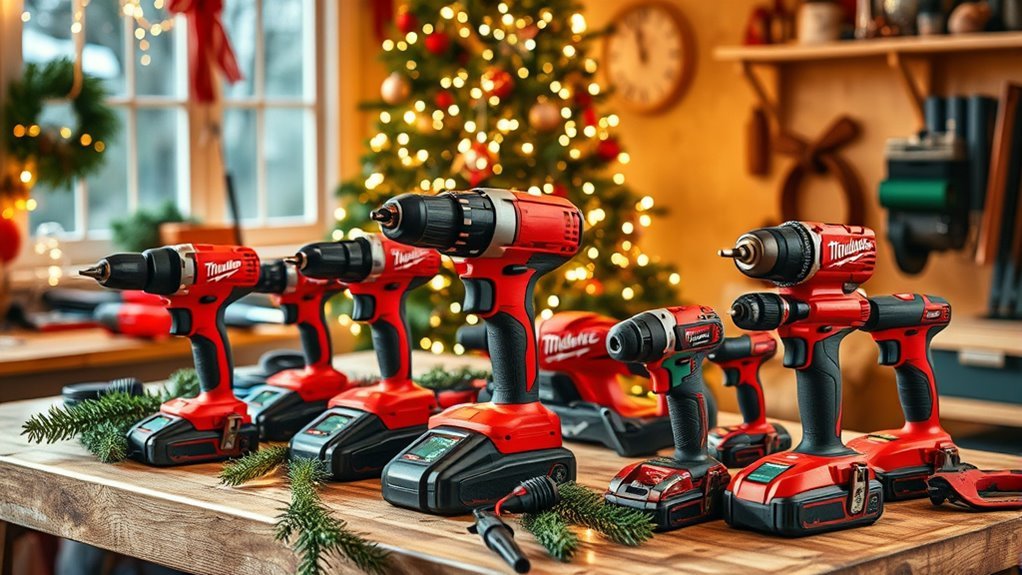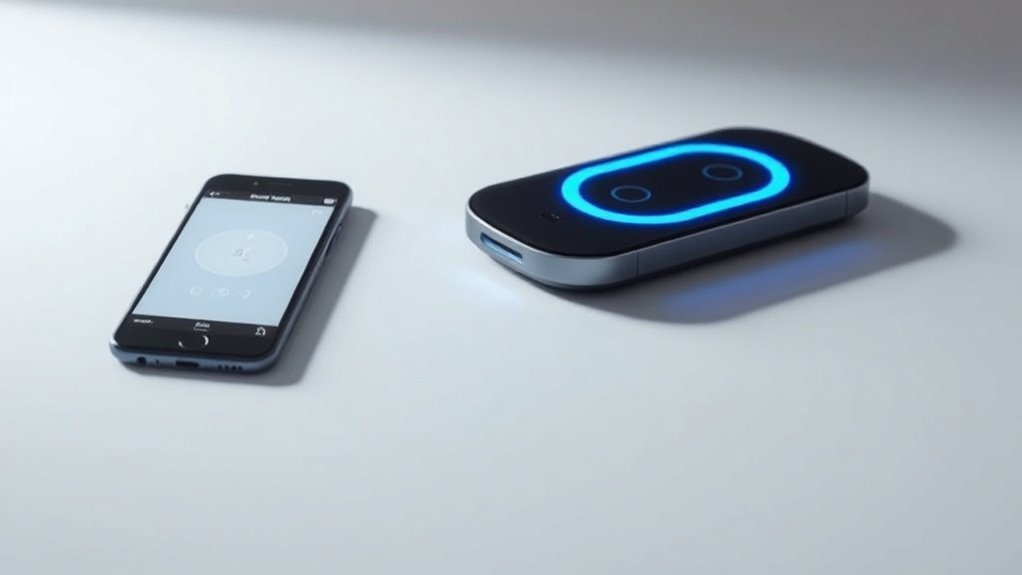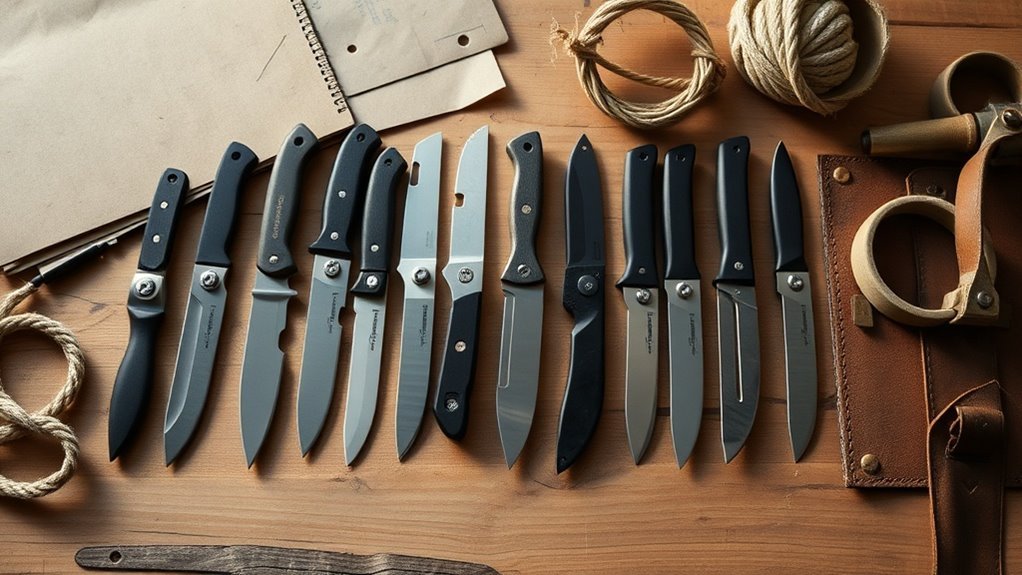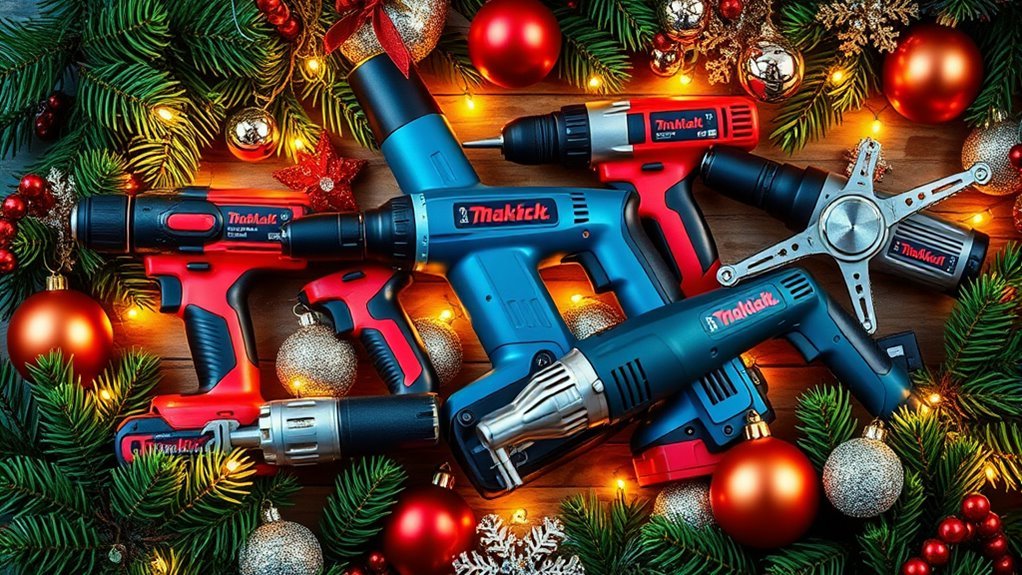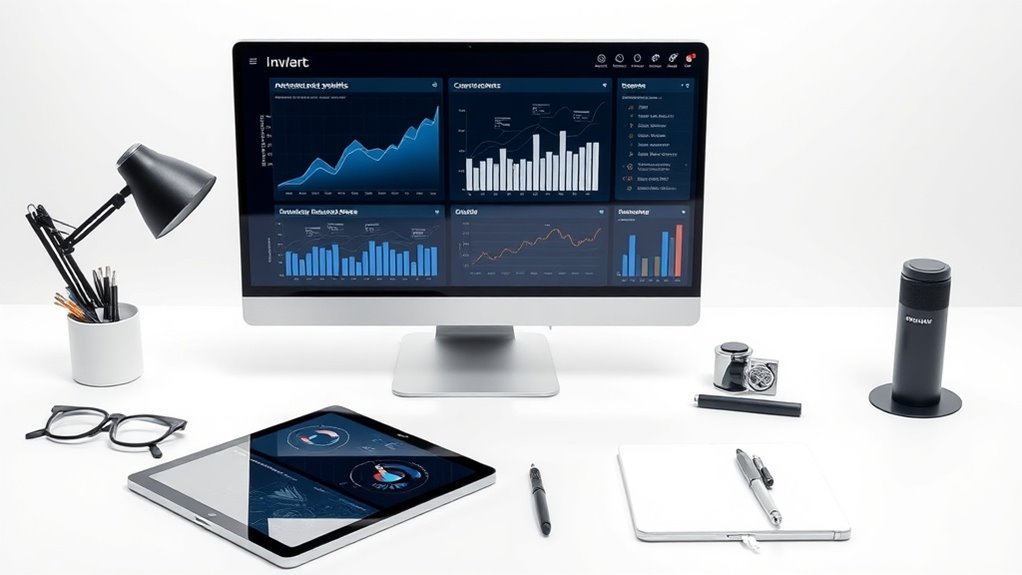The Role of Sensors in Smart DIY Tools
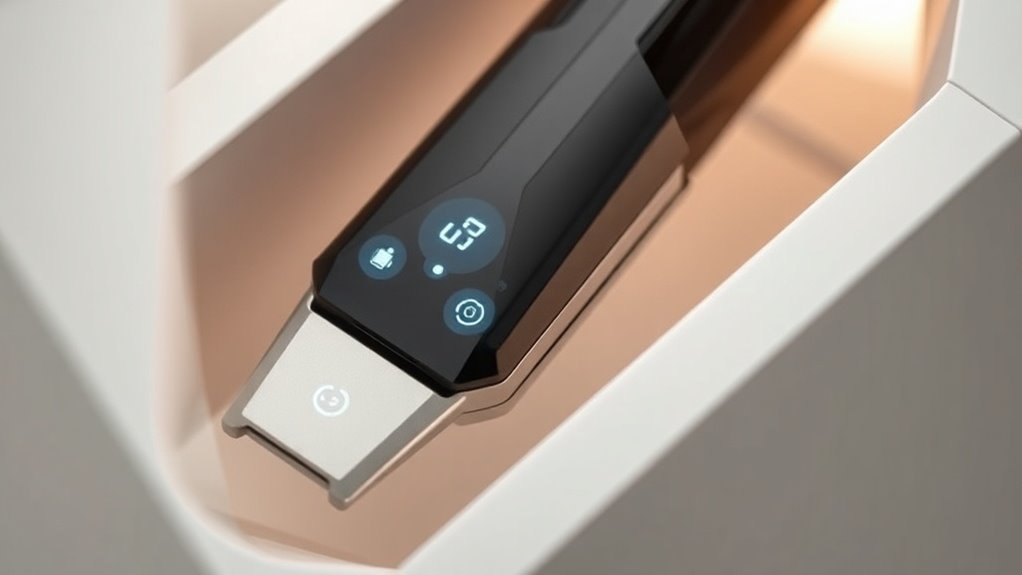
Sensors are key to making DIY tools smarter and more efficient. They help measure distance, monitor temperature, and detect motion, which enhances accuracy and safety in your projects. With the right sensors, your tools can automatically adjust settings and provide real-time feedback, saving you time and reducing mistakes. Plus, innovations in sensor technology will further improve your DIY experience. Stick around to discover how these smart tools can transform your home improvement projects!
Key Takeaways
- Sensors enhance smart DIY tools by improving precision, accuracy, and automation, significantly reducing mistakes in projects.
- Proximity, temperature, motion, pressure, and light sensors are commonly integrated to boost functionality and safety.
- Direct wiring offers reliability for static tools, while wireless communication provides flexibility for versatile applications in DIY projects.
- Smart tools automate repetitive tasks, allowing users to focus on more intricate aspects of their projects for increased productivity.
- Future innovations may include AI-driven planning and IoT connectivity, making smart tools more adaptive and user-friendly.
Understanding Smart DIY Tools

As you explore the world of smart DIY tools, it’s essential to grasp how these innovative devices blend technology with traditional craftsmanship.
Smart DIY tools are designed to enhance your projects, making them easier and more efficient. From smart drills that connect to your smartphone for guided assistance to laser levels that guarantee precision, these tools adapt to your needs.
You’ll find features like intuitive interfaces and automated settings that save time and reduce errors. The integration of connectivity allows you to access tutorials and project tracking, bringing a new dimension to your DIY experience. Additionally, many of these tools incorporate energy management systems, which play a significant role in promoting sustainability and reducing energy consumption.
Embracing smart tools empowers you to release your creativity, streamlining tasks and delivering professional-quality results in the comfort of your home.
The Technology Behind Sensors
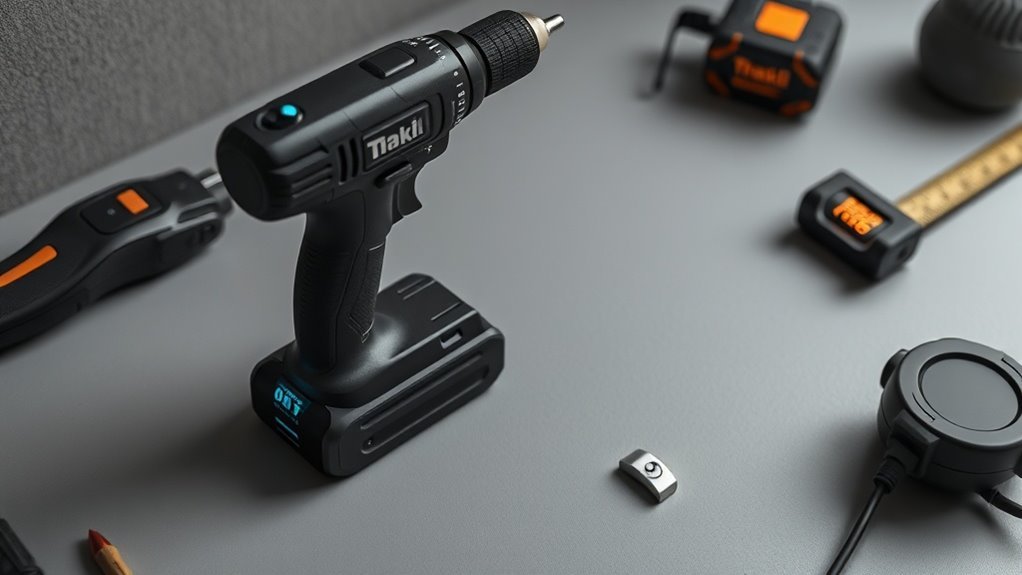
Let’s explore the technology that powers the sensors in smart DIY tools.
You’ll discover the various types of sensors, how they integrate into tools, and the techniques for processing the data they collect.
Understanding these components can enhance your tool use and DIY projects considerably.
Types of Sensors
While exploring the various types of sensors, you’ll find that each one serves a unique purpose, enhancing the functionality of smart DIY tools. For example, proximity sensors detect when you’re near an object, automating tasks like tool storage.
Temperature sensors monitor the heat level, ensuring safe operation during intense usage. Accelerometers track motion, allowing for precise control of power tools.
Light sensors automatically adjust brightness, optimizing visibility for different tasks. In addition, pressure sensors can detect how much force you’re applying, promoting accuracy during projects.
These sensors work together to create a seamless experience, enabling you to achieve better results while ensuring safety in your endeavors. Understanding these different types can help you choose the right tools for your next project.
Sensor Integration Methods
Integrating sensors into smart DIY tools relies on various methods that work together to guarantee functionality and efficiency. You’ll often encounter techniques like direct wiring, wireless communication, and modular sensor integration. Each approach has its unique advantages, helping you customize your tools according to your project’s needs.
| Method | Advantages | Ideal Use Case |
|---|---|---|
| Direct Wiring | Reliable connection | Small, static tools |
| Wireless Communication | Flexibility | Mobile, versatile tools |
| Modular Integration | Easy upgrades | Projects needing changes |
Data Processing Techniques
Once you’ve integrated sensors into your smart DIY tools, the next step involves understanding how to process the data they gather.
Data processing techniques like filtering, smoothing, and aggregating help you make sense of the raw inputs. You can use algorithms to interpret sensor readings, allowing for real-time responses and decisions.
For example, machine learning can enhance accuracy by learning from past data patterns. Analyzing this information helps you optimize performance and troubleshoot issues effectively.
Make sure you store this data securely, too; it can drive future improvements.
Types of Sensors Used in DIY Tools
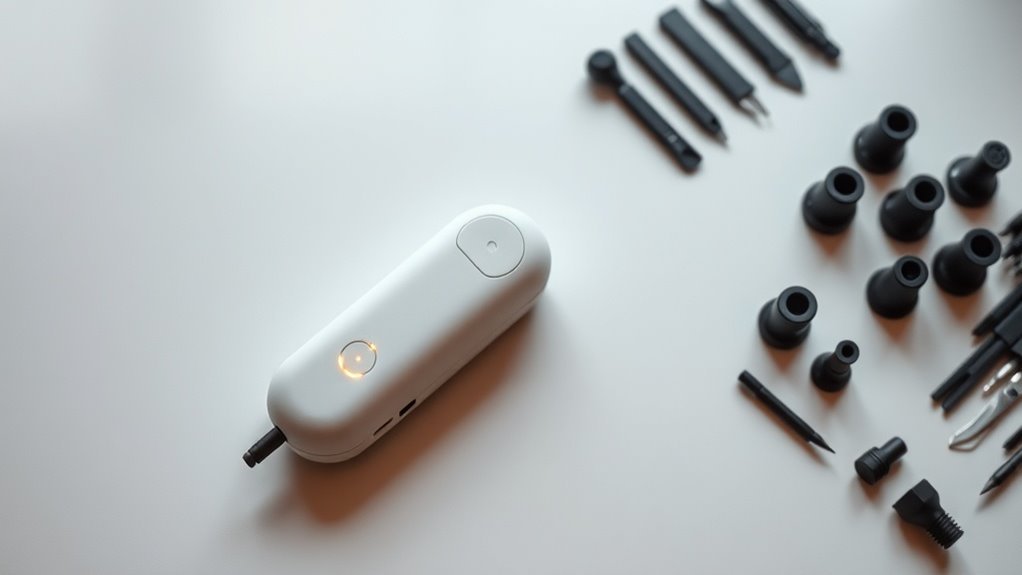
Sensors play an essential role in enhancing the functionality of smart DIY tools. You’ll find various types of sensors that bring precision and efficiency to your projects.
For instance, proximity sensors help determine the distance to surfaces, allowing for accurate measurements. Temperature sensors monitor heat levels, ensuring safe operations, especially with power tools. Motion sensors detect movement and can trigger functions, making tools interactive.
Pressure sensors are used in cutting tools to gauge force applied, improving safety and performance. Finally, light sensors adapt operations based on ambient light conditions, optimizing energy use.
Benefits of Using Smart Tools in Home Improvement
Using smart tools in home improvement can really elevate your DIY game.
With enhanced precision and accuracy, you’ll find that your projects turn out just the way you envision them.
Plus, these tools boost your efficiency and productivity, allowing you to get more done in less time.
Additionally, the integration of Bluetooth and app features allows for seamless control of your tools, making the entire process even more convenient.
Enhanced Precision and Accuracy
Precision is crucial in home improvement projects, and smart DIY tools are revolutionizing the way you tackle these tasks. With integrated sensors, these tools help you achieve remarkable accuracy, reducing errors that often lead to costly mistakes. Imagine how seamless it can be when your tools provide real-time feedback!
Here’s a quick comparison of some smart tools and their precision features:
| Tool | Precision Feature | Benefit |
|---|---|---|
| Smart Level | Laser-guided alignment | Guarantees accurate leveling |
| Digital Tape | Automated measurement | Eliminates manual error |
| Smart Drill | Torque sensors | Prevents overdriving screws |
| Smart Saw | Cutting guides | Ensures clean cuts |
Investing in smart tools means you’ll not only save time but also enhance the quality of your projects!
Increased Efficiency and Productivity
While tackling home improvement projects, you’ll likely find that smart tools greatly boost your efficiency and productivity.
These innovative devices help streamline your workflow, allowing you to focus more on the task at hand rather than getting bogged down by minor details.
Here’s how they can make a difference:
- Time-Saving Features: Smart tools can automatically measure and adjust settings, cutting down on prep time.
- Real-time Feedback: With sensors providing instant data, you can make quick adjustments on the fly.
- Task Automation: Many tools can handle repetitive tasks, giving you more time to tackle complex aspects of your project.
Embracing smart tools lets you finish projects faster and with less hassle, transforming your DIY experience into something truly enjoyable.
Enhancing Safety With Sensors
As technology evolves, smart DIY tools are becoming increasingly equipped with sensors that markedly enhance safety. These sensors can detect potential hazards, such as obstructions or excessive force, alerting you before accidents occur.
For instance, some power tools feature automatic shut-off mechanisms triggered by unsafe conditions, helping you avoid injuries. Additionally, proximity sensors can warn you when you’re too close to a cutting edge or hot surface, keeping your hands and fingers safe.
Moreover, integrated pressure sensors can guarantee that you’re applying the right amount of force, reducing the risk of mistakes. By leveraging these smart technologies, you’re not just improving your outcomes but also creating a safer working environment for yourself and those around you.
Increasing Efficiency and Accuracy
To achieve higher efficiency and accuracy in your projects, smart DIY tools equipped with advanced sensors can be invaluable.
Smart DIY tools with advanced sensors elevate project efficiency and accuracy, making your tasks easier and more precise.
These tools help you work smarter, not harder, by providing real-time data and insights as you tackle tasks.
- Precision Measurement: Sensors can guarantee your cuts and measurements are spot on, reducing the need for rework.
- Automatic Adjustments: Smart tools can make instant adjustments based on the material you’re working with, enhancing the final outcome.
- Data Tracking: Many tools keep track of your progress, allowing you to focus on creativity without worrying about tedious calculations. Additionally, access to resources through innovative technologies empowers you to customize solutions, transforming your DIY experience.
Popular Smart DIY Tools on the Market
Smart DIY tools that harness the power of sensors are becoming increasingly popular among hobbyists and professionals alike.
For instance, smart laser levels help you achieve precise alignments with ease, while digital tape measures provide accurate readings and save you time. Another great option is the smart drill, equipped with sensors to adjust speed and torque based on material, offering a hassle-free experience.
If you’re into woodworking, smart saws come with integrated sensors for enhanced safety and precise cuts.
Ultimately, smart paint sprayers guarantee a smooth finish by adjusting spray patterns according to surface type. With these innovative tools, you can take your DIY projects to the next level, making tasks simpler and more enjoyable.
The Future of DIY and Smart Technology
With technology advancing rapidly, the future of DIY is set to become more interconnected and intuitive than ever before.
As a savvy DIYer, you can look forward to smart tools and processes that enhance your projects. Here’s what to expect:
- AI Integration: Imagine having an AI assistant that helps you plan, design, and troubleshoot your projects in real-time.
- IoT Connectivity: Your tools will communicate with each other, allowing for streamlined workflows and personalized project suggestions.
- Enhanced Sensors: Expect tools that adapt to your skill level, providing feedback and adjusting settings for premier results.
As these innovations unfold, your DIY experiences will become more efficient and enjoyable, transforming the way you tackle every project. Additionally, it’s crucial to remain aware of privacy concerns as you embrace these trends to maximize your benefits while minimizing risks.
Embrace the future!
Questions
How Do Sensors Improve User Experience in Smart DIY Tools?
Sensors enhance your experience by providing real-time feedback, ensuring precision and safety. They help you monitor progress, adjust settings automatically, and boost efficiency, making your DIY projects easier and more enjoyable than ever before.
Can Sensors Be Replaced or Upgraded in Existing DIY Tools?
Sure, you can often upgrade or replace sensors in existing DIY tools like swapping out old batteries. It’s like giving your tools a fresh heartbeat, enhancing their performance to keep the creative sparks flying!
Are Smart DIY Tools Compatible With Traditional Tools?
Yes, smart DIY tools can often be used alongside traditional tools. However, the compatibility might depend on the specific tasks and the technology involved, so it’s best to check manufacturer guidelines for ideal performance.
How Do Smart Sensors Communicate With Other Smart Devices?
Smart sensors communicate with other devices using wireless protocols like Wi-Fi, Bluetooth, or Zigbee. They send data to and receive commands from connected devices, allowing seamless coordination and enhancing the overall functionality of your smart home ecosystem.
What Maintenance Is Required for Smart Sensors in DIY Tools?
You’ll need to regularly clean the sensors to avoid dust buildup, check battery levels, and update firmware. Inspect connections for wear, and guarantee proper calibration to maintain accuracy and performance over time.
Conclusion
In closing, you can see how sensors greatly shape smart DIY tools, paving the path for a more productive and precise home improvement experience. By blending technology with tasks, these tools transform traditional projects into truly tailored triumphs. As you embrace this innovative revolution, you’ll not only enhance efficiency but also guarantee safety and satisfaction. So, step into the future of DIY, and watch your creative capabilities soar with these sensational smart solutions!

